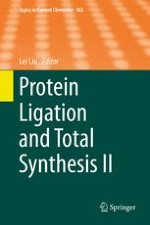2015 | OriginalPaper | Buchkapitel
Chemical and Biological Tools for the Preparation of Modified Histone Proteins
verfasst von : Cecil J. Howard, Ruixuan R. Yu, Miranda L. Gardner, John C. Shimko, Jennifer J. Ottesen
Erschienen in: Protein Ligation and Total Synthesis II
Aktivieren Sie unsere intelligente Suche, um passende Fachinhalte oder Patente zu finden.
Wählen Sie Textabschnitte aus um mit Künstlicher Intelligenz passenden Patente zu finden. powered by
Markieren Sie Textabschnitte, um KI-gestützt weitere passende Inhalte zu finden. powered by
